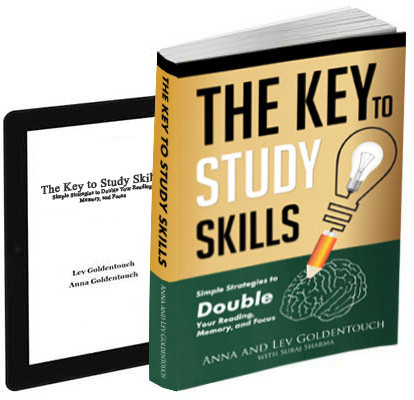Train Your Brain to Connect Ideas from Every Field
In an age driven by hyper-specialization, the ability to think across disciplines is not just rare—it is revolutionary. Every problem we face today, from climate change to artificial intelligence, demands a broader lens than any single domain can offer. Yet most people continue to view the world through one narrow window, solving isolated issues with siloed knowledge. They may work hard, but they miss the bigger picture.
Why is this happening? Why do brilliant minds fail to connect the dots when answers are often hiding in plain sight? The truth is simple: they were never trained to think beyond one domain.
Interdisciplinary thinking is the signature skill of polymaths. It involves synthesizing knowledge across diverse subjects to form a deeper, more complete understanding. Those who master this mindset not only spot patterns others overlook, they innovate, lead, and shape the future.
This article will show you why interdisciplinary thinking is vital, how it opens new cognitive doors, and how the book Anyone Can Train to Become a Polymath can serve as your training manual for mastering this skillset.
Why We Struggle to See the Bigger Picture
Most educational systems are designed to divide knowledge into strict compartments—math belongs in one class, history in another, science in yet another. Students grow up believing that each subject lives in its own box. Unfortunately, this habit of mental segregation follows them into adulthood, creating thinkers who are deep but not wide.
As a result:
- Systems thinking is rare.
- Siloed expertise leads to tunnel vision.
- People struggle to innovate in dynamic or unpredictable situations.
Even in professional settings, employees are encouraged to specialize. An engineer may be excellent at building systems but lacks awareness of how human psychology influences product adoption. A marketing expert may know branding inside out but cannot comprehend the technical side of the product.
This fragmented way of thinking creates inefficiencies, reduces creativity, and ultimately limits growth. By contrast, thinkers who can bridge disciplines see connections others miss, often leading to breakthroughs and transformative success.
How Interdisciplinary Thinkers Are Wired Differently?
Polymaths approach the world with an integrative mindset. They do not just ask “what is the answer?” but also “how does this connect with something else I know?” This orientation transforms how they think, learn, and act.
Here’s how interdisciplinary thinkers differ:
- They ask broader questions. Instead of seeking a direct answer, they search for relationships between ideas.
- They think in terms of systems. They see the moving parts and how changes in one area affect another.
- They transfer learning across contexts. Lessons from history inform technology design; storytelling principles guide business pitches.
In Anyone Can Train to Become a Polymath, you’ll find detailed techniques to build this kind of mental agility. The book explores how memory techniques, mental mapping, curiosity, and strategic learning create a web of understanding that’s deeper than traditional study.
Through this lens, your brain no longer stores knowledge in separate boxes. Instead, it becomes a rich network of ideas constantly interacting and recombining to generate new insights.
Surprising Strengths of Thinking Across Fields
When you learn to think across disciplines, you develop several mental advantages that outperform narrow specialization:
1. Pattern Recognition Beyond Boundaries
Polymathic thinkers develop an eye for structure. Whether it’s recognizing feedback loops in ecosystems or identifying user behavior patterns in data science, they detect recurring frameworks. These patterns become cognitive shortcuts, helping solve complex problems efficiently.
For example, the Fibonacci sequence appears in mathematics, biology, art, and financial markets. Once recognized, such patterns become bridges between worlds, enriching your perspective.
2. Stronger Problem Solving Through Transfer
When disciplines collide, powerful insights emerge. The skill of knowledge transfer allows you to take a principle from one domain, like energy conservation in physics, and apply it metaphorically or structurally to project management or workflow efficiency.
This capacity is not natural for most people, but it is learnable. By training the brain to cross-reference and abstract, you dramatically expand your problem-solving toolkit.
3. Enhanced Creativity and Innovation
Great innovation often comes from the edges, where disciplines overlap. This phenomenon is known as the Medici Effect, named after the Renaissance-era Medici family, who supported artists, scientists, and thinkers across various fields, thereby contributing to one of the most creative periods in history.
Your creativity increases not because you think harder, but because you think differently. You begin to recombine ideas from one field into another, generating solutions no one else can see.
4. Learning That Accelerates Over Time
The more disciplines you understand, the faster you acquire new ones. Why? Because you’re building a mental “scaffold” of knowledge. New ideas no longer float in isolation—they immediately connect to what you already know.
This is why polymaths grow exponentially. Their learning curve becomes steeper, more efficient, and more valuable over time.
Real Instances of Interdisciplinary Brilliance
Let’s take some recognizable names:
- Leonardo da Vinci combined anatomy, engineering, and painting to produce artworks and inventions centuries ahead of his time.
- Elon Musk draws from physics, economics, rocket science, design, and AI to build world-changing companies like Tesla and SpaceX.
- Ada Lovelace used her knowledge of music, math, and logic to write the world’s first algorithm for a computing machine.
- Benjamin Franklin was a writer, inventor, politician, and scientist—all roles reinforcing and feeding each other.
These examples are not about being superhuman—they’re about integrating multiple fields of knowledge to unlock deeper thinking. Anyone Can Train to Become a Polymath helps you follow that same path.
How does the Book Helps You Think Across Disciplines?
Unlike many self-help books that offer vague motivation, “Anyone Can Train to Become a Polymath” offers concrete guidance, rooted in cognitive science, educational psychology, and personal experience. It is a practical toolkit built for learners, parents, professionals, and entrepreneurs.
Inside the book, you’ll discover:
- How to reframe learning as a lifelong adventure, not a rigid process.
- How to use visualization and storytelling to memorize and internalize complex ideas.
- How to experiment with moonlighting projects that mix your various interests.
- How to raise children with polymathic instincts.
- How to build a career that thrives on flexibility and learning agility.
By following this path, you not only learn more—you learn better. You train your mind to think like a strategist, a scientist, and a storyteller all at once.
Why This Skillset Matters Now More Than Ever
We are living in a time of convergence. Technology, economics, health, and culture are no longer separate domains—they’re deeply intertwined. Employers no longer want specialists who can only perform one task. They want generalists with a sharp edge—people who can think flexibly, adapt quickly, and connect ideas in novel ways.
Likewise, individuals are discovering that the ability to learn anything on demand is the most valuable meta-skill of all. Whether you’re solving business challenges, launching a creative project, or navigating your career through uncertain terrain, your interdisciplinary mindset becomes your compass.
In a world of rapid automation, this is your human edge. No machine can yet replicate a mind trained to synthesize, abstract, and cross-pollinate ideas. That’s what this book trains you to do.
Ready to Start Thinking Differently?
If you’ve ever felt boxed in by conventional learning, frustrated by limited options, or curious about more expansive ways to use your mind, this is your invitation.
You do not need to be born a genius. You do not need to master ten fields at once.
What you need is a clear method, consistent practice, and the right guidance.
Anyone Can Train to Become a Polymath is that guide. With it, you’ll learn to see across disciplines and spot what others miss, giving you a true edge in learning, career, and life.

Get 4 Free Sample Chapters of the Key To Study Book
Get access to advanced training, and a selection of free apps to train your reading speed and visual memory

